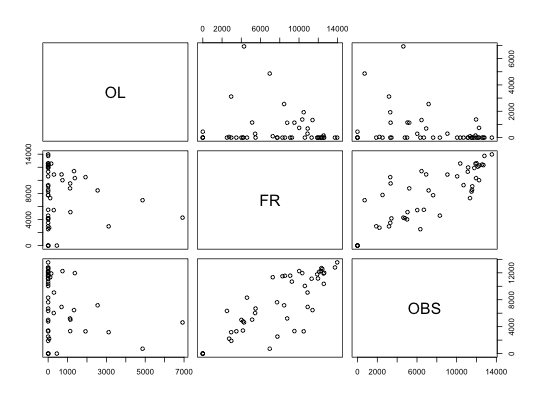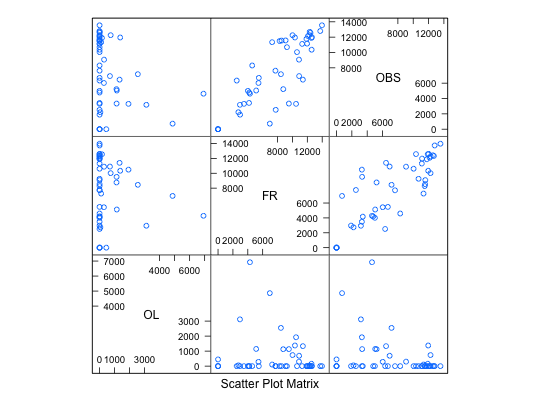Fruit Trees
To estimate the total surface occupied by fruit trees in 3 small areas (R63, R67, and R68) of Navarra (Spain) in 2001, a sample of 47 square segments has been taken. The experimental units are square segments or quadrats of 4 hectares, obtained by random sampling after overlaying a square grid on the study domain. Data are used in Case Study: Fruit Trees, Chapter 12.
Format
A data frame with 47 observations on the following 17 variables:
- QUADRAT
number of the sampled segment or quadrat
- SArea
the small area, a factor with levels
R63,R67, andR68- WH
area classified as wheat in sampled segment
- BA
area classified as barley in sampled segment
- NAR
area classified as non arable in sampled segment
- COR
area classified as corn in sampled segment
- SF
area classified as sunflower in sampled segment
- VI
area classified as vineyard in sampled segment
- PS
area classified as grass in sampled segment
- ES
area classified as asparagus in sampled segment
- AF
area classified as lucerne in sampled segment
- CO
area classified as rape (Brassica Napus) in sampled segment
- AR
area classified as rice in sampled segment
- AL
area classified as almonds in sampled segment
- OL
area classified as olives in sampled segment
- FR
area classified as fruit trees in sampled segment
- OBS
the observed area of fruit trees in sampled segment
Source
Militino, A. F., et. al. (2006) “Using Small Area Models to Estimate the Total Area Occupied by Olive Trees.” Journal of Agricultural, Biological and Environmental Statistics, 11: 450-461.
References
Ugarte, M. D., Militino, A. F., and Arnholt, A. T. (2008) Probability and Statistics with R. Chapman & Hall/CRC.
Examples
with(data = satfruit, pairs(satfruit[ , 15:17]))# Trellis Approach splom(~data.frame(satfruit[ , 15:17]), data = satfruit)

